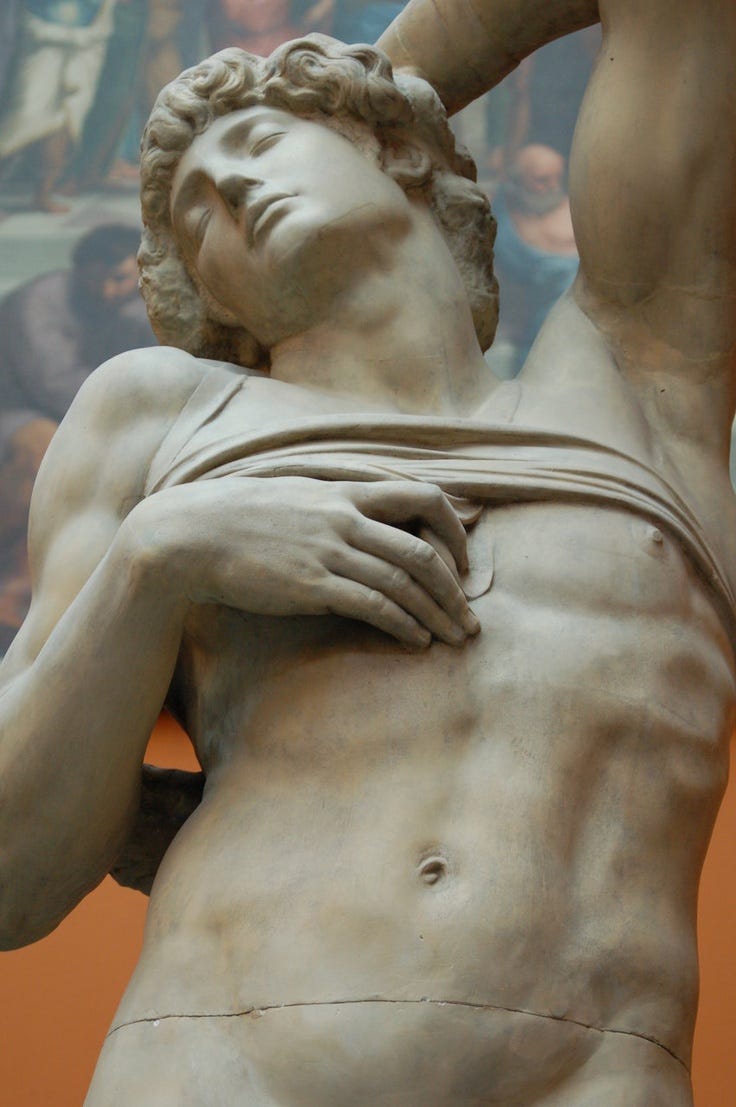Michelangelo the Poet
The Transfiguration of Beauty, mid-16th century
We all know Michelangelo as the titanic genius behind the Sistine Chapel, the sculptor who breathed life into stone, and the architect who shaped the grandeur of St. Peter’s. But what many don’t know is that Michelangelo was also a poet—a fierce, contemplative voice of the Renaissance who poured his obsessions, doubts, and divine longings into verse.
His sonnets, like his sculptures, are shaped by tension: between flesh and spirit, desire and transcendence, the earthly and the eternal. They offer a rare glimpse into the soul of a man who saw beauty not only with his eyes, but with his soul.
One such sonnet follows below—translated by John Addington Symonds in the 19th century—where Michelangelo questions the nature of beauty and the divine gaze that transforms it:
The Transfiguration of Beauty (A Dialogue with Love) Nay, prithee tell me, Love, when I behold My lady, do mine eyes her beauty see In truth, or dwells that loveliness in me Which multiplies her grace a thousandfold? Thou needs must know; for thou with her of old Comest to stir my soul's tranquillity; Yet would I not seek one sigh less, or be By loss of that loved flame, more simply cold.— The beauty thou discernest, all is hers; But grows in radiance as it soars on high, Through mortal eyes unto the soul above: ’Tis there transfigured; for the soul confers On what she holds, her own divinity: And this transfigured beauty wins thy love
Michelangelo di Lodovico Buonarroti Simoni
Thank you for being part of Cultural Canvas! If you love what we do, consider supporting us to keep it free for everyone. Stay inspired, and see you in the next post!


